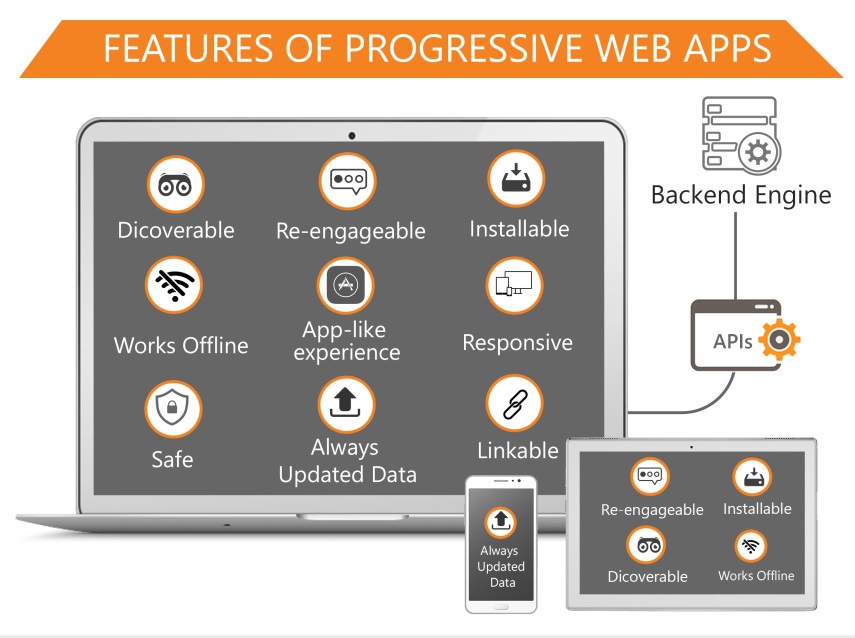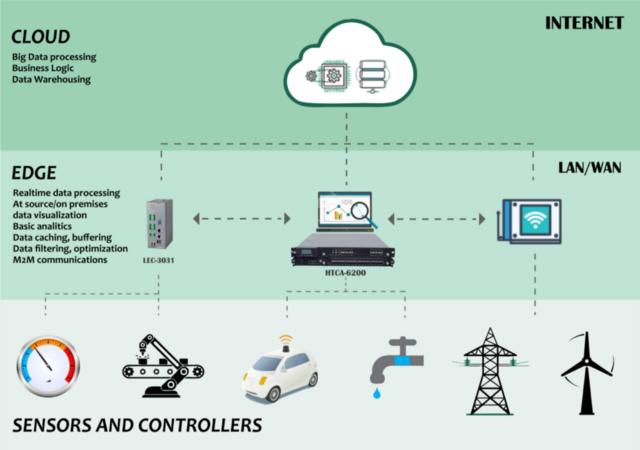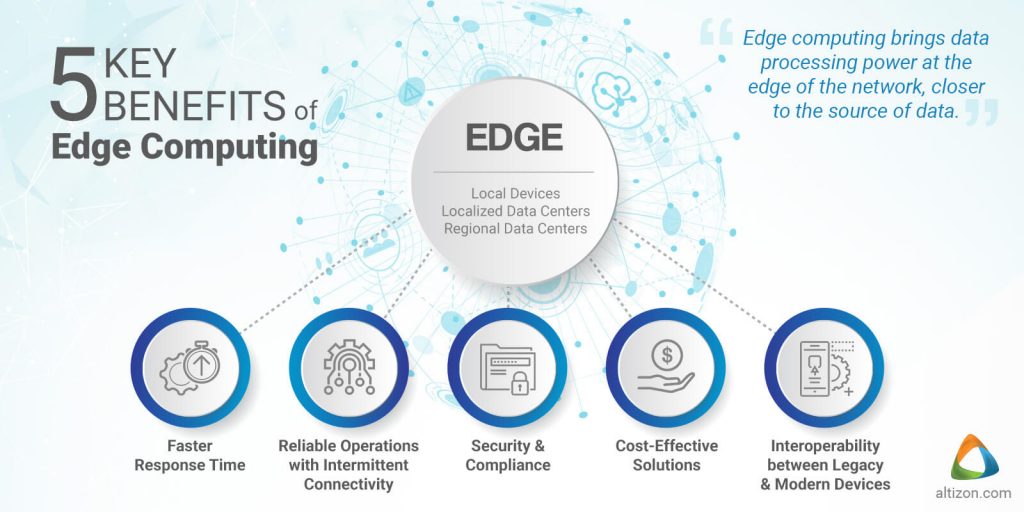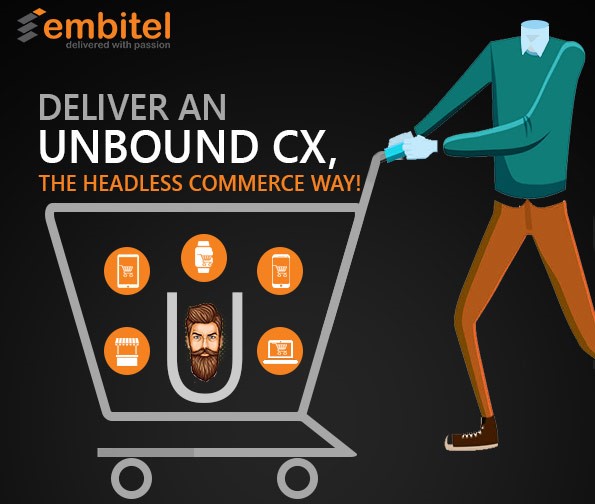Inherently the technology stack of a Headless Commerce solution is designed to be independent of the front-end UI.
Why such architecture, you ask? – Customer Touch-points have evolved and are still evolving. Ecommerce transactions are happening beyond an online website or a mobile app!
Welcome to the world of Ecommerce via an Infotainment Dashboard, a Smart-Watch, a voice-assistant system (Hello Alexa!) and more.
The content and UI needs to rendered on such varied platforms and an Ecommerce Brand is expected to deliver a seamless & consistent shopping experience across the channels.
The true essence of a Headless Commerce can’t be realized if an ecommerce business needs to worry about the content delivery to these different platforms/devices.
But wait a minute, how about having to develop just one website that works like app and work across all devices and operating systems?
Yes it is possible! Welcome Progressive Web Apps (PWA) in your Ecommerce Army.
In the words of a Google developer, Alex Russel, “PWA is a website that took all the right vitamins”.
The concept of PWA is simple- It is a hybrid between your native app and a mobile optimized web page. The users don’t have to sacrifice their mobile hard drive memory for downloading them. And like all websites, they are accessible through the web browser.
By using modern web technologies, Progressive Web Apps deliver app-like experience without the need of having any App Store Ecosystem between the users and the developers.
Progressive Web Apps: The most convenient way to go Headless
When Progressive Web Apps are deployed along with a Headless CMS, your entire ecommerce system becomes not only more accessible but also future-proof.
More accessible because the user can find the web apps through a Google search and use them without installing them through an app store.
And Future-proof because your headless commerce is API based and will be compatible with any front-end UI that may emerge in future.
When making your ecommerce store compatible with various devices becomes a necessity, you can easily render customized front-end UIs without worrying about your back-end.
A snapshot of features that make PWAs so powerful
But why do we call PWAs the easiest way to go headless? The answer is simple. Developing a progressive web app is easier and less costly compared to your native apps.
Front-end developers with the right set of skills can design PWAs in no time. And once it is ready, you are done! It is compatible with all the mobile devices across operating systems and platforms.
With a headless backend at the helm, the content delivery also becomes a cakewalk. You can push frequent updates to the app, fix the bugs, experiment with the look and feel of the UI and what not. Doing the same with a native app would mean troubling your user with an update for every change.
Value-add ECommerce with Progressive Web Apps
Besides having many benefits on the technical front, PWA also make a lot sense from business point of view. Let’s talk about some of these values-adds.
App-like: Developed inside an “app-shell”, these web-pages are no less than apps in terms of look and feel. The shell part is generally installed in the device whereas the content part is fetched online. The app-shell covers the full screen of the device.
Even in terms of speed and interaction, it is like a native app. One of the reasons behind such an experience is the separation of the content part and the app functionality.
Security: A PWA serves the content over HTTPS. It ensures there is no tampering with the original content. Any kind of snooping activity is also prevented with such arrangements.
Resilience: One of the most striking advantages of native apps that web pages lack is offline or poor-quality network connectivity. Progressive web apps deploy ‘Service Workers’ that ensure robust performance and no impact on the user-experience even in bad connectivity conditions. These service workers are nothing but scripts that are executed by the browser and deliver features such as push-notification, caching etc.
Discoverable: This is one of the features that is a great value-add in terms of visibility on the search engine. The search engines can find the PWAs and index them. This implies that these apps will appear on the search engine result page when users search for keywords relevant to your Ecommerce Brand.
The content of these apps can also be easily shared as URLs over chatting apps, email and other means.
Always Updated: Again, it is the service workers at play that keep the progressive web apps fresh and updated always. They run in the background to check for any update pushed by the developers.
Result- the user always gets to access the updated content without actually updating anything on his/her mobile phone.
These benefits look very good in theory. But do they actually help. Let’s have a look at some of the PWA figures and you can decide by yourselves.

The list goes on and on and new names are getting added every day to the PWA’s fans list.
PWA and Headless Commerce Go Hand in Hand
Progressive Web Apps and Headless Commerce is a match made in heaven. Case in point- what’s the use of a platform without the right content. While these apps are still the star, headless CMS is the content-delivery guy that ensure smooth running of the app.
Why do we say so?
- Headless CMS updates the information real quick and delivers it even faster.
- Provides a robust and efficient platform for the developers to develop the app in whichever language they wish.
- Provides Cloud features as well as the APIs needed to run the app.
- Headless CMS also provides scalability and complete independence in terms of features to be included in the app (as long as browser supports them)
The Future Perspective
Going by the results achieved by early adopters of PWA, it is safe to say that it is definitely the future of ecommerce.
And when working in tandem with headless commerce approach, we can expect better conversions, higher revenues and an enhanced user experience all at the same time.
What mobile sites could not achieve, PWA with almost 4-5 times higher page load speed and app-like experience, will most certainly will.























